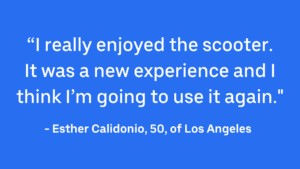The concept of a “car-light” lifestyle—reducing reliance on personal vehicles—is gaining traction as people seek ways to save money, reduce their carbon footprint, and improve their overall well-being. A recent study by Uber, the “One Less Car Challenge,” sheds light on the feasibility and benefits of embracing alternative transportation options. This article explores the key findings of this challenge and illuminates the path towards a car-light future.
Uber’s One Less Car Challenge: A Glimpse into Car-Light Living
Uber’s challenge involved over 170 volunteers across North America who committed to forgoing their personal vehicles for a month. The results were compelling, demonstrating that a significant shift towards car-light living is possible with the right infrastructure and mindset. Participants reduced their personal car use by a staggering 97%, relying on a mix of public transit, walking, cycling, carpooling, and ride-hailing services.
Key Findings: A Brighter Path to Transportation
The study highlighted several crucial aspects of transitioning to a car-light lifestyle:
The Viability of Multimodal Transportation
The challenge proved that a multimodal transportation ecosystem, incorporating various options like ride-hailing, can effectively replace a household car. This finding underscores the importance of diverse and accessible transportation choices.
Changing Habits and Long-Term Impact
While initially challenging, the trial led to significant behavioral changes. 20% of participants considered permanently giving up their cars, while 75% planned to drive less and utilize other modes more frequently. This suggests that experiencing car-light living can lead to lasting shifts in transportation habits.

The “Rule of Four”: Essential Modes for Car Replacement
The study identified four primary modes of transportation crucial for effectively replacing a private car: public transit, walking, carpooling, and ride-hailing. Each mode catered to different needs, with ride-hailing often filling gaps for late-night trips or transporting bulky items. This emphasizes the need for a well-rounded transportation network.
Overcoming Initial Hurdles and Embracing the Benefits
Participants initially faced challenges adjusting to a new routine, particularly in the first two weeks. Some missed the perceived flexibility of a personal car, while others encountered inadequate infrastructure, such as lacking bike lanes or poorly connected bus routes. However, the overwhelming majority experienced unexpected benefits, including improved physical and mental health, more time for socializing, and increased patronage of local businesses.
A Brighter Future: Rethinking Transportation Norms
With millions of private vehicles on the road, the “one person, one car” mentality needs reevaluation. The One Less Car Challenge illuminates the potential of car-light living to create more sustainable cities, reduce emissions, and enhance quality of life. By addressing infrastructure challenges and promoting multimodal transportation options, we can pave the way for a brighter, car-light future. This study offers valuable insights for individuals considering reducing their car dependency and for city planners seeking to create more livable and sustainable urban environments. Embracing a car-light lifestyle isn’t just about ditching your car; it’s about embracing a more efficient, connected, and fulfilling way of life.
